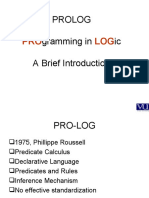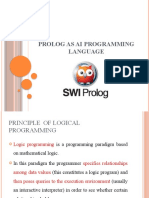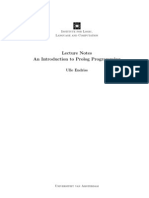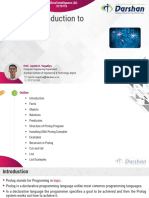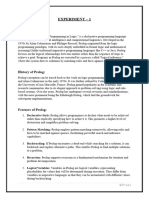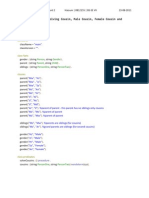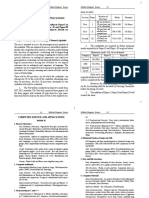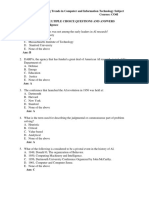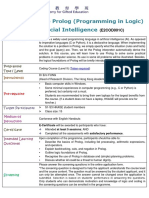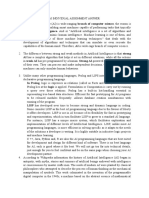0% found this document useful (0 votes)
61 views61 pagesModule 4 Notes
The document discusses Prolog, a logic programming language. It describes basic Prolog concepts like facts, rules, clauses, queries, variables, and how a simple Prolog program works. It also provides examples of representing relations and writing predicates in Prolog.
Uploaded by
Nitish JhaCopyright
© © All Rights Reserved
We take content rights seriously. If you suspect this is your content, claim it here.
Available Formats
Download as PPT, PDF, TXT or read online on Scribd
0% found this document useful (0 votes)
61 views61 pagesModule 4 Notes
The document discusses Prolog, a logic programming language. It describes basic Prolog concepts like facts, rules, clauses, queries, variables, and how a simple Prolog program works. It also provides examples of representing relations and writing predicates in Prolog.
Uploaded by
Nitish JhaCopyright
© © All Rights Reserved
We take content rights seriously. If you suspect this is your content, claim it here.
Available Formats
Download as PPT, PDF, TXT or read online on Scribd
/ 61
